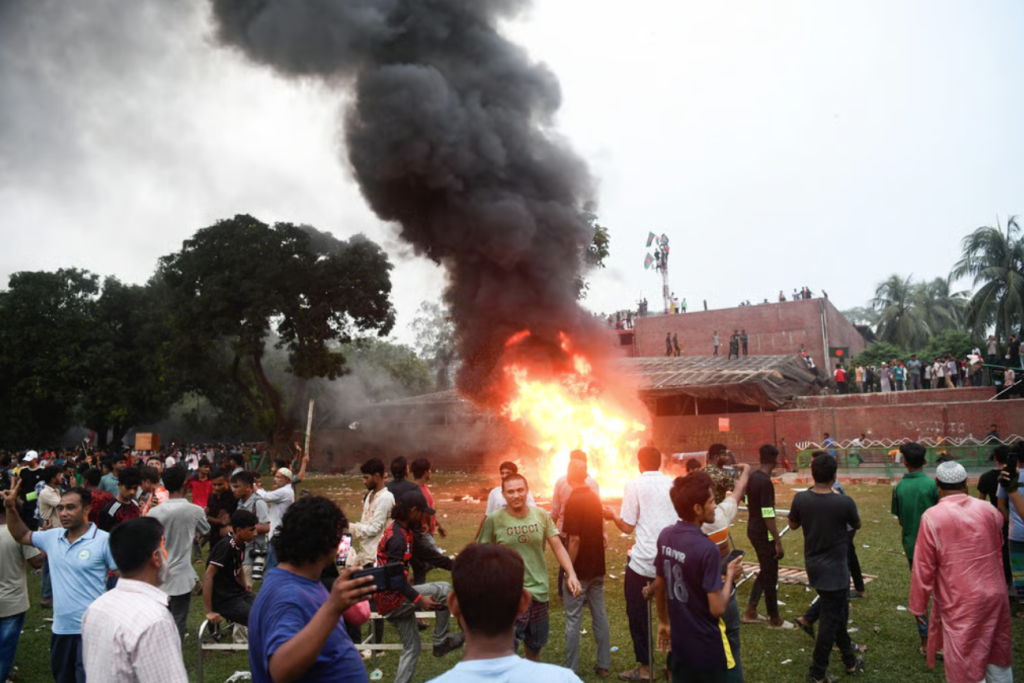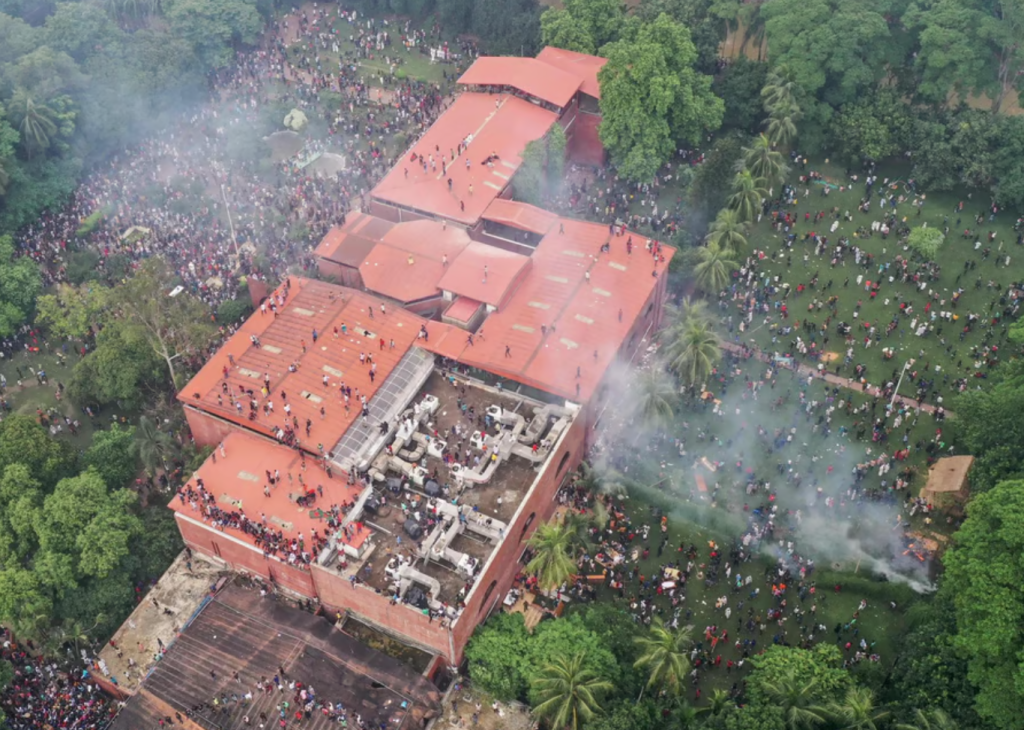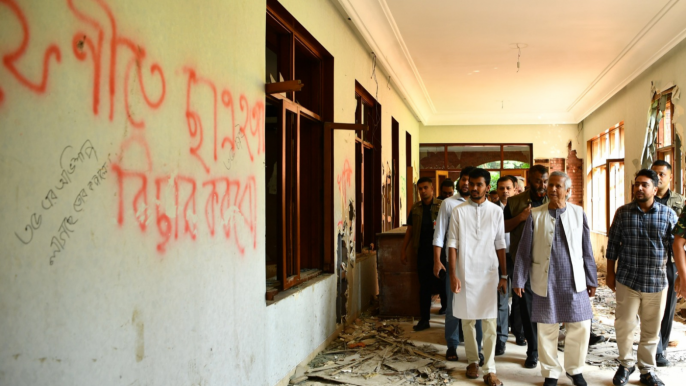The transformation of the historic Gonobhaban into the “July People’s Uprising Memorial Museum” is in full swing, with preparations underway for its official inauguration on August 5.
Speaking recently in Chattogram, Cultural Affairs Adviser Mostofa Sarwar Farooki stated that a large team has been mobilized to complete the project within the next six weeks. “Committees and subcommittees have been formed. We are working intensely across the country to finish the interior and curatorial work in time for the opening,” he said.
Experts emphasize that the museum will not be just a traditional exhibition space, but a “house of public memory,” where history will be brought to life through curated storytelling, artifacts, and interactive exhibits.
Located at the northern edge of the National Parliament complex in Sher-e-Bangla Nagar, the Gonobhaban was the official residence of former Prime Minister Sheikh Hasina between 1996–2001, and again from 2010 until her ouster on August 5, 2024.
Following her departure amid the mass uprising, the interim government quickly decided to convert the residence into a memorial museum honoring the 34-day people’s revolt, which led to the collapse of her 16-year rule.
The move was approved at a high-level advisory council meeting on December 24, 2024, and a formal committee was announced on November 2. The museum’s efforts are jointly led by writer and researcher Ebadur Rahman as convener and interim government advisor Md. Mahfuz Alam as co-convener.

According to senior officials from the Ministry of Cultural Affairs, extensive restoration and preservation work is already underway. Despite significant structural damage to parts of the Gonobhaban during the uprising, the museum will maintain those conditions as part of its historical authenticity.
Curators and experts have consulted with international institutions experienced in creating museums around revolutions and uprisings. “This museum is not only for the people of Bangladesh; it will also be open to the world,” a government source told Times of Bangladesh, “to showcase the global significance of the July Uprising.”
The museum will feature a detailed timeline of the 34-day movement, lists and memories of those who lost their lives, and displays covering 16 years of alleged authoritarianism and repression under Sheikh Hasina. It will also honor the victory of the student-led and public uprising.
Plans are in place to include a replica of the infamous “Aynaghor” (mirror room) and develop research facilities for future scholars. “This will be a center for research as well as memory,” said Md. Zahidul Haque Sobuj, Assistant Professor of Sculpture at Jagannath University. “The museum will preserve not only the heroism but also the sorrow of July. Future generations must know the full story.”

Following the uprising, millions of protesters stormed the Gonobhaban, scrawling anti-authoritarian graffiti on its walls and expressing their rage. At a cabinet briefing, Md. Nahid Islam, then adviser on information and communication, stated that all symbolic and physical traces of public anger and sacrifice would be preserved.
“Gonobhaban was once a symbol of tyranny and impunity,” said Md. Mahfuz Alam, special assistant to the Chief Adviser. “Now it will become a house of victory and memory, reflecting the people’s reclaiming of their dignity and rights.”
On October 28, 2024, Interim Government Chief Adviser Muhammad Yunus visited the premises and ordered an expedited transformation of the building into a memorial site. He emphasized that it should reflect both the repression under Sheikh Hasina and the people’s defiant uprising.
The move to turn Gonobhaban into a museum gained momentum after August 8, 2024, when the Yunus-led interim government formally took charge. On September 5, Youth and Sports Advisor Asif Mahmud Sajib Bhuiyan announced the decision to the public following a key advisory meeting.
The “July People’s Uprising Memorial Museum” is expected to open its doors to the public on August 5, 2025, marking exactly one year since the ousting of Sheikh Hasina—an event now etched into Bangladesh’s collective memory.


